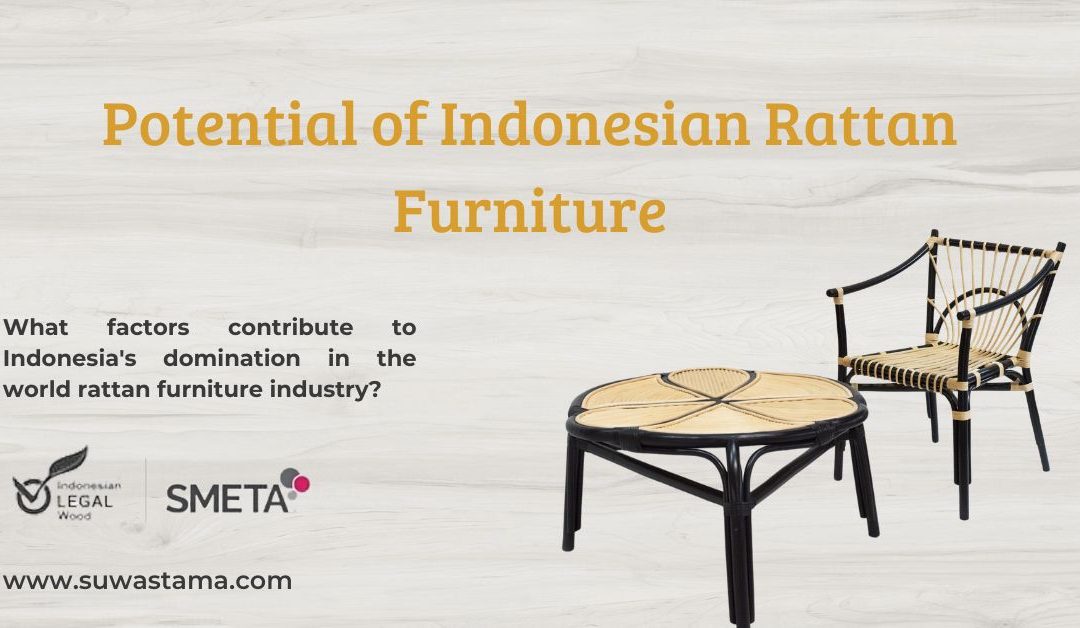Indonesia is known as the world’s largest producer of rattan. No wonder it’s also a global front-runner in exporting rattan furniture. What factors contribute to Indonesia’s domination in the world rattan furniture industry?
Domestic Rattan Furniture Production
Indonesia churns out a variety of high-quality rattan furniture, ranging from household items to office furniture and accessories. Chairs, tables, beds, shelves—you name it, they make it. Craftsmen hubs like Cirebon, Jepara, and Sukoharjo are buzzing with production.
Large-scale furniture companies like Suwastama Rattan Furniture play a pivotal role in supporting domestic rattan furniture productivity and innovative designs.
Indonesia’s Rattan Industry History
The rattan industry in Indonesia has a long-standing history. Processing rattan into furniture and handicrafts gained momentum in the 1980s. Rattan hubs are scattered across places like Cirebon, Banten, Jepara, Surakarta, and Malang, with annual furniture and craft production estimated to reach thousands of tons.
In recent years, design innovation and rattan production technology have evolved to enhance the market value and competitiveness of Indonesian rattan products globally.
Rattan Furniture and Craft Exports
As the largest rattan producer, Indonesia is a leading exporter of rattan products worldwide. In 2021, the total export value of Indonesian rattan furniture and crafts reached US$1.33 billion or around Rp19 trillion. These products find their way to countries like the United States, the Netherlands, Japan, and Australia.
Bright Prospects for the Rattan Industry Ahead
The business prospects for Indonesian rattan furniture and crafts remain highly promising. With the global market’s increasing demand for sustainable furniture, the appeal of rattan furniture to the world is growing. Rattan’s short lifespan and clustered growth make it ideal for sustainable furniture.
Continuous government and industry support are crucial to developing rattan product designs that align with global market preferences. This way, Indonesia is poised to maintain its unrivaled status as the king of rattan products and the leader in rattan furniture exports globally.
Strategies to Boost Competitiveness
Indonesian rattan products boast advantages such as quality raw materials, craftsmanship, and unique Indonesian designs. Several strategies have been implemented to enhance the competitiveness of these products, including:
- Adoption of modern production technologies like automatic rattan burning.
- Development of product designs catering to international market preferences.
- Product diversification for various market segments.
Challenges in Rattan Industry Development
Despite bright prospects, the domestic rattan industry faces challenges, including:
- Intense competition with Vietnam and China.
- Lack of skilled and creative human resources in the rattan industry.
- Relatively high production costs.
- The need for research and development support.
Conclusion
Indonesia has evolved into a leading producer and exporter of rattan furniture and crafts. This potential should be continually developed to advance the domestic industry and strengthen Indonesia’s position in the global market.

